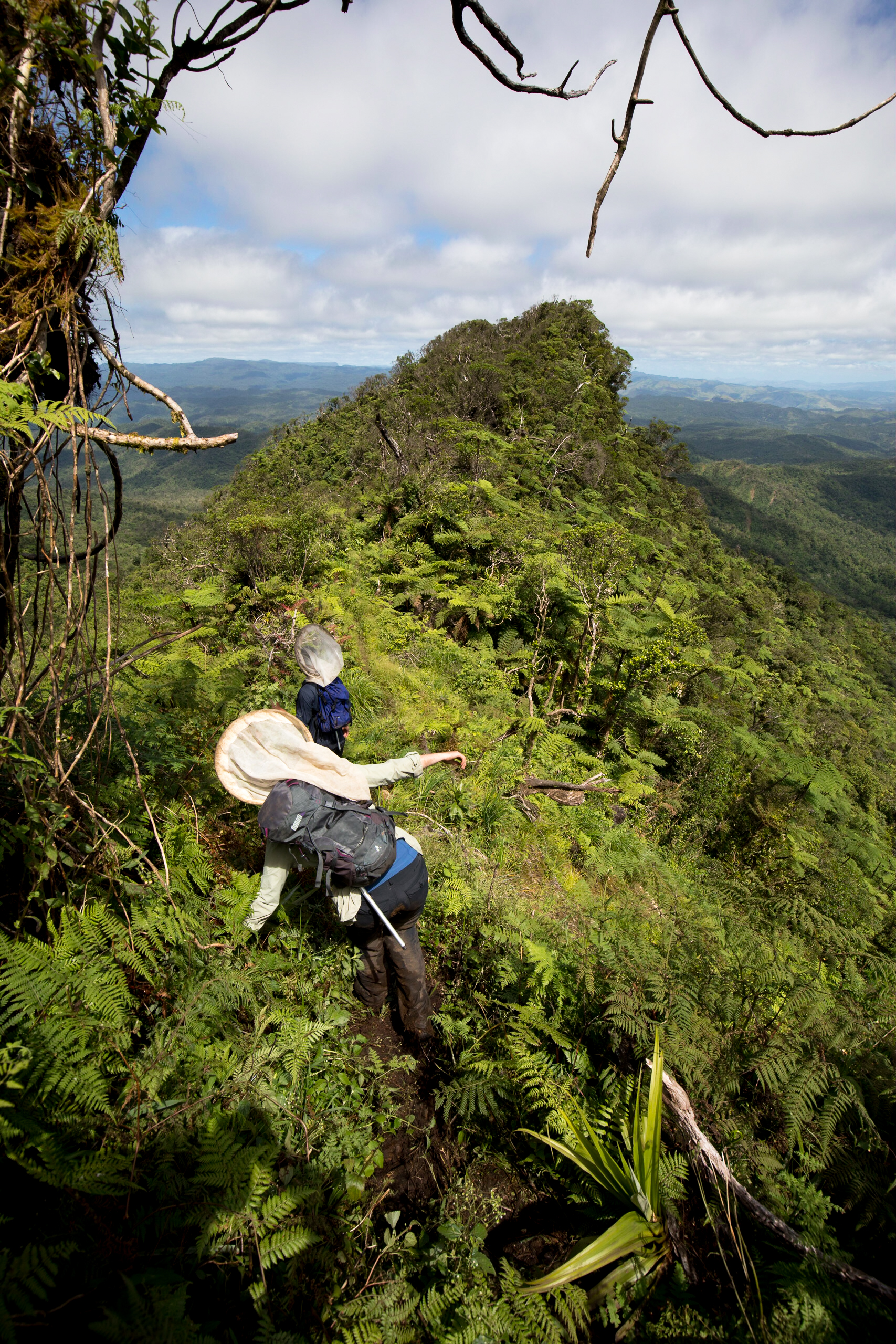Way back in the 1930s, American entomologist Elwood Zimmerman discovered three tiny beautiful bees on tahetahe flowers in Polynesia. While the bees themselves were beautiful, what fascinated subsequent entomologists the most was how these tiny insects came to be on the islands – over 4,000 kilometers (2,485 miles) away from the nearest other bee population in Hawai’i and 6,000 kilometers (3,728 miles) away from Australia. Well, 59 years later the mystery has finally been solved thanks to some long-handled nets.
The original three tiny bees were kept in the Bernice P Bishop Museum of Honolulu until 1965, when they were formally described as Tuamotu’s masked bee (Hylaeus tuamotuensis) by bee specialist Professor Charles Michener. After that, the species was not seen again, leading to fear that the bees may have gone extinct. Now, researchers have discovered eight more new species in the genus Hylaeus discovered between 2014 and 2019 that are all related to the original Tuamotu’s masked bee species.
Six of the eight species were found in Fiji, with one found in Polynesia and one species discovered in Micronesia. Using morphological features and DNA data they were able to distinguish the eight species and provide evidence of the hylaeine bees in the South Pacific east of Vanuatu that have never been recorded before.
“Here we show that, despite almost a decade of sampling for bees in Fiji, there is a whole group of species that flew right over our heads until now. By exploring new sampling techniques, we discovered an unknown species radiation of Hylaeus masked bees in the forest canopy,” said Dr James Dorey – lecturer at the University of Wollongong, adjunct lecturer at Flinders University, and lead author of the study – in a statement.
What made this discovery possible was a change in sampling method; previous trips had focused on sampling from flowering plants found at ground level, while the new species were discovered in the tree canopy.
“It wasn’t until we brought very long nets to Fiji and started collecting from the trees that we started to find our mysterious little bees. Maybe we should not be surprised when the etymology of Hylaeus might mean ‘belonging to the forest’,” said Dorey.
While the bees might not have been able to travel the enormous distance between Hawai’i and Polynesia in one go, the team thinks they are likely to find more species in the hundreds of small islands that lie between, especially since they now know where to look. They strongly suggest that other research trips focus on looking in the canopy to uncover more previously overlooked bee species. This discovery also helps explain the mystery of how the bees came to be on these far-flung islands in the first place.
Mount Tomanivi is Fiji’s highest peak, and while it is home to bee species has yet to be sampled for the Hylaeus genus.
“With these bees we can solve the mystery: the ancestors of H. tuamotuensis reached French Polynesia by island-hopping via Fiji and the southwest Pacific!” continued Dorey.
The team also suggests that strong weather could have dispersed the bees across different islands. “Because most masked bees nest in wood, it’s likely that they rafted between islands, especially when tropical cyclones wash masses of plant materials down rivers and out to sea. It is also possible that they were blown by high winds, but that would have been a much more perilous journey for our little bees,” said Dorey.
One of the new species has been named veli’s Hylaeus in reference to the veli of folklore in Fiji who are known as powerful people associated with the forest.
“Hence, the name is meant to invoke a sense of responsibility for protecting these new forest-specialist species and their trees,” reminded the authors.
The paper is published in the journal Frontiers in Ecology and Evolution.
Source Link: Eight Beautiful New Iridescent "Island-Hopping" Bee Species Found In Polynesia
